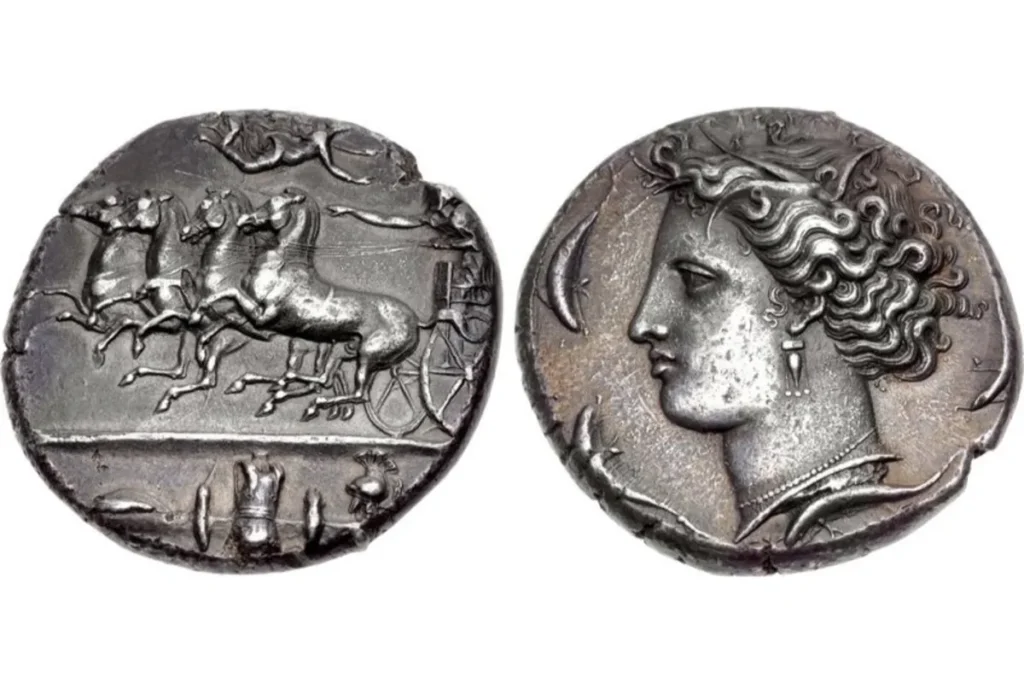Ancient Greek coins are more than just old money; they are windows into the past. These coins tell us stories about Greek city-states, their leaders, and their economies. In this article, we’ll explore seven amazing facts about these historical treasures that will surprise you!
The Birthplace of Coinage

Did you know that Ancient Greece is often credited with creating one of the first metal coin systems? This happened around the 7th century BC. While other cultures made coins, the Greeks were pioneers in using metals like electrum—a natural mix of gold and silver. They stamped these coins with unique designs to show their value.
Examples of Early Greek Coins:
- Tetradrachm: A silver coin from the 5th century BC, featuring Athena and an owl.
- Stater: A silver coin from the 6th century BC, showcasing a sea turtle from Aegina.
- Croeseid: A special coin made of both gold and silver from Lydia, dating back to the 6th century BC.
The Tetradrachm: Symbol of Athenian Power
One of the most famous coins was the tetradrachm, which came from Athens in the 5th century BC. This coin became essential for trade throughout the Mediterranean, representing Athens’ economic strength.
On one side, it featured the goddess Athena, and on the other side was her symbol, the owl. Because of its trusted weight and purity, it was a favorite for buying and selling goods.
Designs with Deep Symbolism
Greek coins weren’t just for transactions; they carried messages about power and culture. Each city-state used specific symbols to represent their identity. For instance, Corinth used Pegasus,
the legendary winged horse, while Knossos featured the Labyrinth, connecting it to the famous Minotaur story. These designs communicated the beliefs and values of their societies.
Rare Coins Unearthed in Greece

Recent discoveries in Greece have revealed coins from the 6th to 4th centuries BC, highlighting the diverse and rich culture of the time. Among these finds are Olympic coins, which showcase how much sports mattered in ancient Greek life. These coins not only served as currency but also celebrated important cultural events.
Coin Making: A Labor of Precision
Creating these ancient coins was a detailed and careful process. Skilled artisans engraved designs on bronze or iron dies. They would heat blank metal discs made of gold, silver, or electrum and strike them to create coins.
Each piece was hand-stamped, making every coin unique. This craftsmanship reflects the value they placed on art and accuracy.
Ancient Greek coins are not just fascinating artifacts; they are crucial to understanding the history of Greece. From their role in trade to their artistic designs, these coins reveal much about the civilization that created them.
They symbolize the power, culture, and economic life of the Greek city-states. Today, they continue to inspire collectors and historians alike, showing us how money was intertwined with identity and society.
What materials were ancient Greek coins made of?
Ancient Greek coins were made from metals like gold, silver, and electrum.
What was the purpose of Greek coins?
Greek coins were used for trade, to show power, and to represent city-states’ identities.
What is the tetradrachm?
The tetradrachm is a famous silver coin from Athens, featuring the goddess Athena and her owl.
How were these coins designed?
Artisans engraved designs onto dies and stamped them onto heated metal discs to create coins
Why are rare coins important?
Rare coins help us learn about the culture, economy, and values of ancient Greece.













